DmC: Devil May Cry (PlayStation 3) Review
By Jamie Greenhill  26.06.2013
26.06.2013
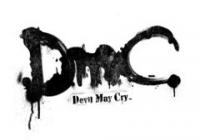
From the coin flipping lunacy of Devil May Cry 2, to the simply sublime Devil May Cry 3, Capcom's iconic slash'em-up has seen its fair share of Heaven and Hell. Therefore, when marmite studio Ninja Theory was tasked with taking the helm of a series reboot, fans treated the news with a little bit of scepticism. Okay, that is a lie; they reacted the same way a toddler does if someone steals its candy and sets fire to its mum! This time Cubed3 walks through a crowd of weeping children to discover if it's halos or pitchforks for DmC: Devil May Cry.
For the uninitiated, the Devil May Cry series focuses on the exploits of the half demon Dante, as he somewhat reluctantly attempts to save the world. Seamlessly blending hack and slash combat, with guns and demonic powers is what Devil May Cry does best. The game is broken up into a series of linear missions, with the aim being to complete them with as much flair as possible. Each completed stage is graded from D to SSS. The higher the grade, the more points Dante will have to spend on items and new abilities.
The key to getting a high score, and making the game's announcer say every S word under the sun, is variety and speed. Juggling an enemy into the air, slamming them into the ground, filling them bullets before slicing the poor fellow in two with a demonic axe, tends to result in more points than spamming the most basic sword combo. Devil May Cry games are generally relatively easy to finish, but completing this game with a SSS rank is a whole different kettle of demonic fish.
Those familiar with the series will notice that the basics haven't changed much. The first thing veterans will notice is that Devil May Cry's traditional fixed camera angles have been left on the cutting room floor. The camera can now be controlled by the player, which has two effects. Firstly, it makes levels feel less claustrophobic, and secondly it makes combat feel a lot more brutal.
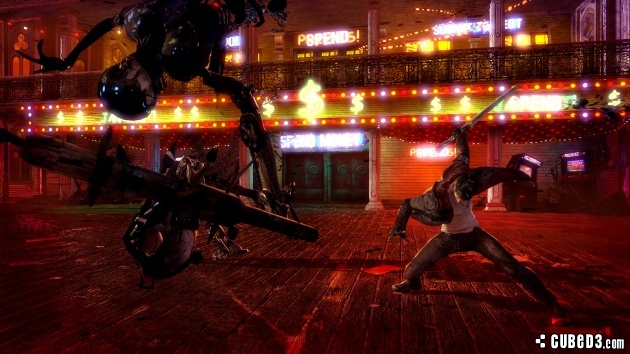
The other way DmC differentiates itself from the Devil May Cry titles of the past is in Dante's lineage. His dad is still the demon Sparda, but his mum is no longer an unnamed human. In this continuity she's the angel Eva. To reflect this change, Dante now has access to angelic weaponry as well as the demon kind. Demonic weapons tend to be slow but powerful, whereas the angelic kinds are fast and have longer range.
With each new weapon type, comes a new move, the Angel Lift and Demon Pull, respectively. When not battling hordes of chainsaw-wielding demon spawn, these two moves are used to navigate the environment. Working as a makeshift grappling hook, the Demon Pull is used to rip platforms out of the terrain, while the Angel Lift is used to pull Dante to them. That's not the interesting part, though! The real fun begins when Dante uses them in combat. They give him the ability to rip away shields, pull enemies into the air and make linking together combos a doddle.
The added mobility is a great addition to Dante's repertoire, but a more impressive improvement is how weapons can be switched on the fly. Yes, that's right - weapons are no longer equipped from the pause menu. It is now possible to torture a single enemy with all eight weapons in Dante's arsenal (five mêlée weapons and three guns); it's all very intuitive, and an addition that makes for some truly epic combos.
A person would be forgiven for thinking that with all these different moves and weapons, DmC would have quite a steep learning curve. Thankfully, this isn't the case. For the first few levels the only things that need to be worried about are Dante's pistols and sword. Most of his other weapons and abilities are introduced gradually by progressing through the story. For the most part, which moves to unlock and upgrade is left in the player's hands.
So far so good, but it's not all smooth sailing for everyone's favourite platinum-haired demon hunter. There are a couple of clouds that threaten to rain on the parade. The first is the lack of a manual lock-on. Instead, Dante locks onto whichever enemy is in his eye-line. This becomes a pain when there are little deformed cupids hiding behind enemies and taking pot shots. On the easier difficulties it's not really an issue but as the challenge ramps up it becomes more noticeably frustrating.
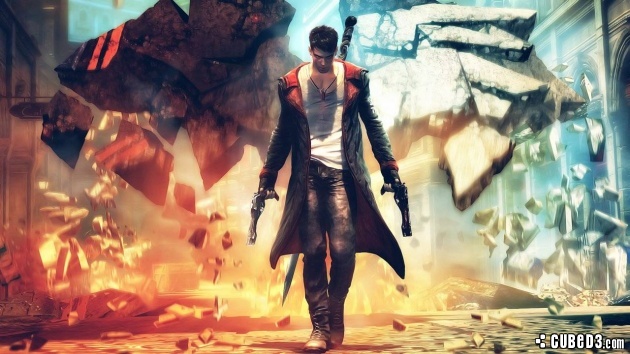
Another minor quibble with the game is Dante's devil trigger. It works similar to past games in that as Dante attacks he builds up a metre. When it reaches a certain point, Dante can unleash his inner demon. The problem is it's just a bit dull. In previous iterations, activating devil trigger unlocked a whole new move set. In this game it just launches all enemies into the air, leaving them helpless until Dante returns to normal. It is more useful than in previous games, but at the same time way less flashy.
The other issues with DmC are double-edged swords. They are problems that have come about because of improvements to other parts of the game. The first is that in some areas battles become frustrating due to the threat of falling into oblivion. On the one hand, levels are more intricate and interesting. On the other, the simple enclosed corridors of the past never interrupted one of Dante's combos. The second issue is DmC runs at a somewhat humble 30fps (on PS3 and 360, at least). Previous titles have run at a silky smooth 60fps, but then previous titles have never looked anywhere near this good.
Speaking of which, the Ninja Theory art department should be congratulated on a job well done. Not only is character animation top notch, thanks to the developer's previous experience with motion-capture guru Andy Serkis; the world is bright and colourful as well. It seems like they have mixed up a yummy cocktail of: Shadows of the Damned, Inception, and They Live. Yes, 'They Live' - that '80s movie starring Rowdy Roddy Piper. Someone in Cambridge is clearly a fan…
Paying homage to movies aside, developers generally struggle with creating games with a second dimension. From the purple haze of Metroid Prime 2: Echoes, to the grimy murk of The Legend of Zelda: Twilight Princess, alternate dimensions tend to be bland affairs. DmC's Limbo shirks this convention by being visually stunning. As Dante gets pulled into the demon world, pavements collapse, buildings twist and the contrast is jacked way up. The reason it succeeds where others have failed is because the world is morphed to such an extent that only someone who witnessed the change could guess they are standing in the same place.
As well as being a visual treat, DmC provides a pretty sweet aural dessert as well. The soundtrack is split in two; half of the tracks are produced by Combichrist and the other half by Noisia. The music is suitably demonic, with the background music frequently travelling from dark and eerie to screeching heavy rock. Fans of the series will be happy to know that unlike some games (here's looking at you, Far Cry 3), dubstep hasn't crept in, sucked out all the atmosphere and left migraines in its place.
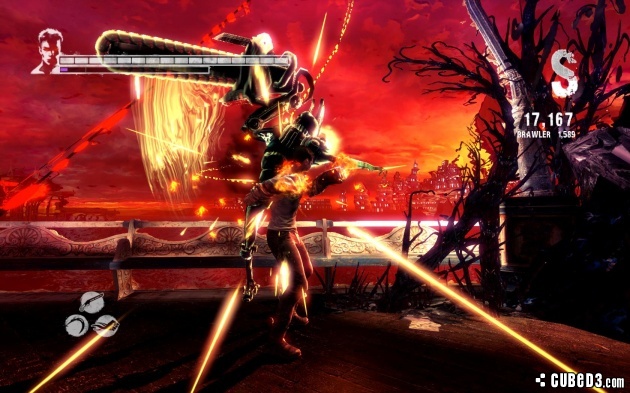
Now on to what the Cambridge Ninjas are famous for. Heavenly Sword and Enslaved had their fair share of critics, but when it came to plot and characters they received almost unanimous praise. The stories were well crafted, flowed well and the characters developed naturally. Unfortunately, Ninja Theory has bowled a bit of a gutter ball with its third game. DmC's narrative suffers from the same issue as No More Heroes 2. The combination of a one-liner spewing hero with a serious storyline quite simply doesn't work. It's a shame because there are some good ideas ruined by a developer that's trying a little too hard to please everybody.
Nowhere is this more apparent than in the plot itself. To anyone who has played the previous titles, it's all a little bit too predictable. Worrying about what the fans think has resulted in a tale that feels really safe. For someone not acquainted with the Devil May Cry series this ceases to be a problem, but for those who do know their Spardas from their Alastors, there's a sense of 'been there done that,' which does beg the question of why reboot a series if you're going to recreate it exactly the same way.
With that said, there are elements of the story that really do shine through. Towards the end of the game, there is a sequence of events, which leaves a question in the player's mind. It's the same question asked by Trip at the end of Enslaved; 'Did I do the right thing?' If there is a sequel, Dante could very easily be cast as a villain. Also worth noting is that DmC has a scene featuring Mundas, which is quite honestly the best scene in the entire series. The story is definitely a mixed bag; it might just be worth enduring the lows to experience the highs.
Like the four games preceding it, once the credits have rolled and the story is over, there are plenty of reasons to keep playing DmC. The first thing worth mentioning is some areas aren't reachable first time through the game. These areas may require a certain weapon or skill, which Dante doesn't acquire until much later in the game.
The second reason to continue playing is the various different difficulty settings that can be unlocked; from the classic 'Dante Must Die' and 'Heaven and Hell' modes to the somewhat sadomasochistic 'Hell and Hell' mode. For anyone interested, it involves Dante being killable in one hit, with enemy aggression set to max. Sane people may be more interested in the Bloody Palace, which is a free DLC mode that is pure combat. The player faces wave after wave of enemies until Dante is dead or time runs out.
Speaking of DLC, there is a fairly chunky piece of downloadable content that follows on from the game's conclusion. It focuses on the exploits of Dante's troubled brother Vergil. With a new brother comes a completely new move set. Vergil even gets a new Devil Trigger, allowing him to summon a doppelganger to help dish out even more pain. Unlike the main game, the story is told through animated comic book style cut-scenes (motion capture is expensive, kids). Criticising them for cutting costs would be a little harsh, especially because the art looks very nice. What can be criticised is the simplistic plot. Much like certain elements of the main game, it seemed a little bit overly familiar. For fans of the series there's a sense of knowing the destination before taking the first step on the journey.
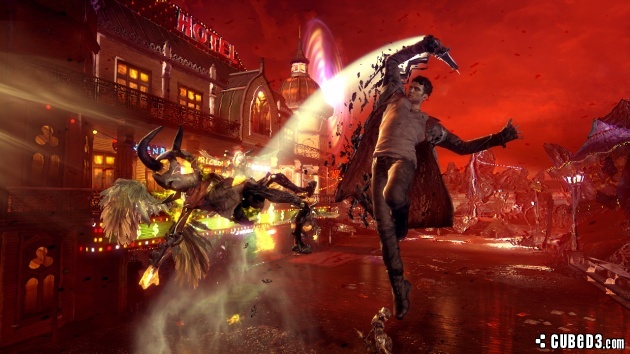
Cubed3 Rating
Great - Silver Award

DmC: Devil May Cry is good game with some obvious flaws. Fluid combat and mind bending level design are the game's strengths. A character, who doesn't mesh well with a serious plot, is the Achilles heel. After the somewhat frosty reception from fans at the idea of a reboot, Ninja Theory really needed to hit a home run. While DmC does take some big steps in the right direction, it doesn't quite reach the heights required to overcome fan anger. With sales of the game falling below expectations, it does seem as though the franchise could end up much like Dante - stuck in Limbo.
Comments
Comments are currently disabled

 Sign In
Sign In Game Details
Game Details
 Out now
Out now  Out now
Out now  Out now
Out now  Out now
Out now  Subscribe to this topic
Subscribe to this topic Features
Features





 Top
Top

